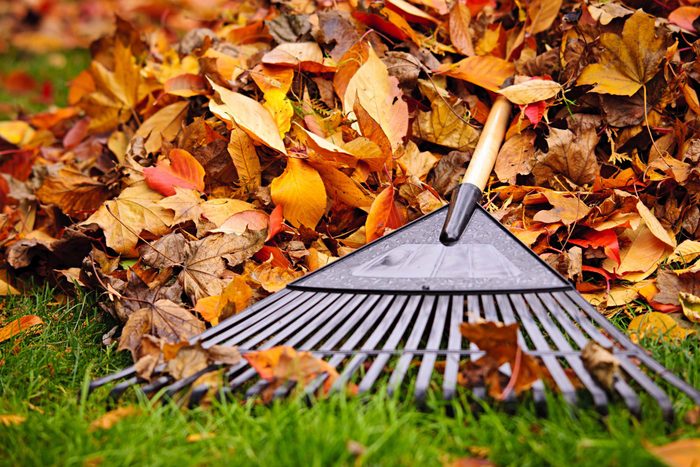
Improve Your Grass
Cut back on next year’s upkeep by fertilizing and reseeding your lawn now. A good winter fertilizer will have a balance of nitrogen and potassium with an extra dose of phosphorus to strengthen grass roots. Repair bald spots by raking the surface, throwing down some seeds, covering with compost and watering deeply. Mow one last time and keep your grass fairly short so it won’t be damaged by frost. Be sure to leave the clippings on your lawn since they will decompose and add even more nutrients to the soil. Empty the lawnmower’s gas tank after mowing and store it away.
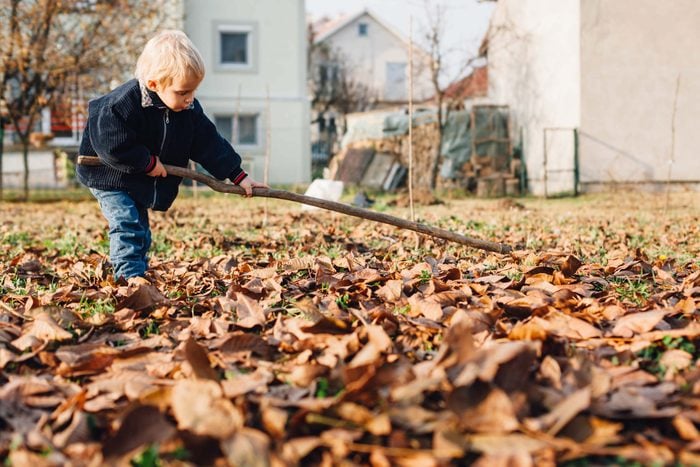
Relax the Raking
Use your leaves as mulch instead of bagging them -they make the protective cover for flowerbeds and shrubs. You can also throw them into your compost for next spring’s fertilizer. Wait until the ground freezes to use your mulch-usually 10 to 15 cm (4 to 6 inches) is enough to protect against extreme cold.
NOTE: The only time you can’t compost your leaves is when any of your trees or shrubs have a fungal infection like tar spots (black or yellow spots on the leaves). If your garden has a fungal infection you must rake up all leaves to prevent the infection from spreading.
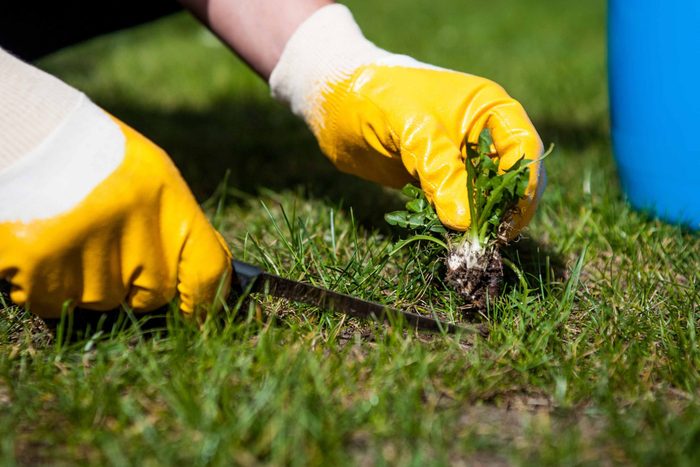
Stop Unwanted Visitors
Bite the bullet and do one last weeding. Pulling up weeds before they have time to spread their seeds will save you weeding in the spring and summer. Throw any healthy weeds into your compost. Stop small rodents and other pests from moving into your garden by cutting back tall grass and cleaning underneath shrubs and trees.
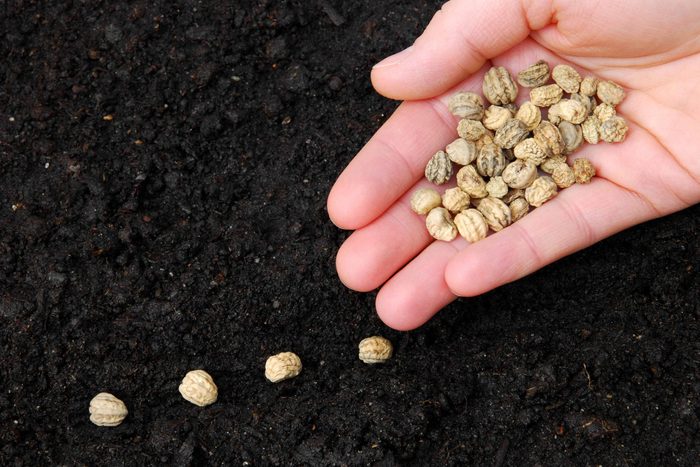
Do Your Spring Planting Now
Autumn is a good time to introduce new shrubs or trees to your garden. To plant them, dig a hole twice the width of the plant’s root ball, gently place the root ball into the hole, cover it with fertile soil, water it well and then mulch. Invest in a bulb planter or a roto earth drill to get your spring bulbs into the ground in minutes.
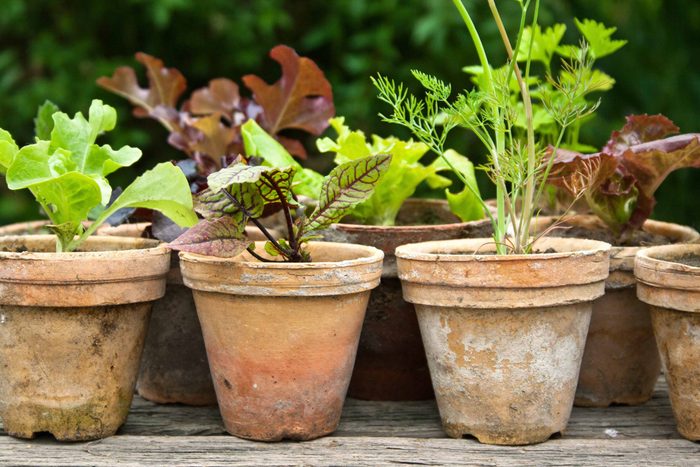
Get Your Equipment Ready
Clean out your pots and planters now so you won’t have a mess to clean up in the spring when mould and other diseases have invaded. Store or cover your patio furniture and barbecues and be sure to clean and oil any gardening tools and store them for next year.
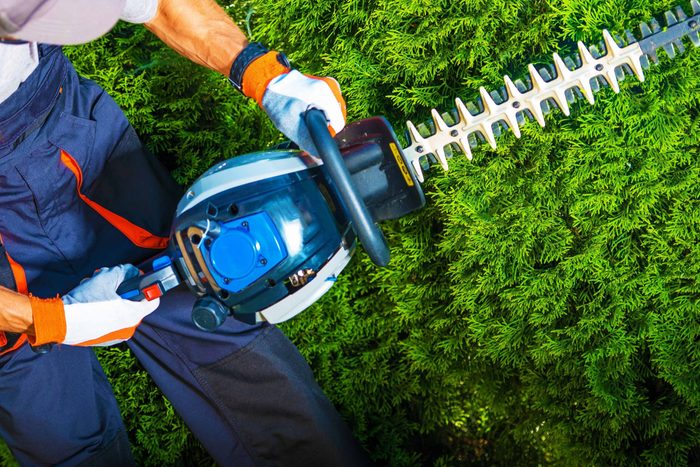
Hire Professionals
It’s worth the investment to hire professionals to winterize your pool and tree trimmers to cut away overhanging branches near windows, the roof or electrical wires.
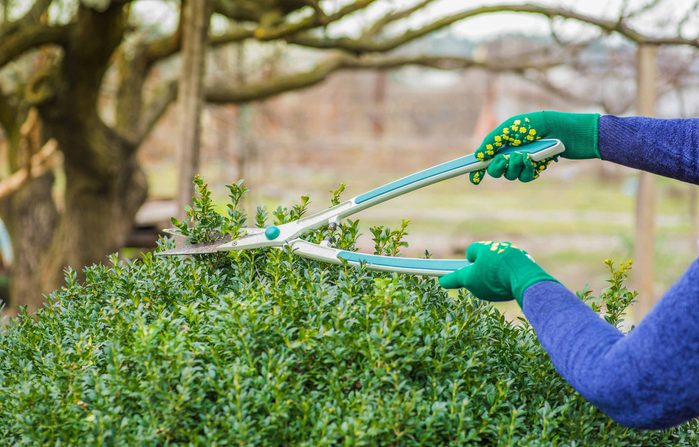
Leave Them Be
There’s no need to cut down everything in your garden. Leave any seed bearing perennials, like Black Eyed Susans and Echinacea since they provide food for birds and add colour. Climbers like clematis should be cut back or fastened down. Dormant plants won’t need any mulching but your rose bushes should be mulched. Remove any brown or mushy leaves from hostas, peonies and other large-leaf plants to cut back on slugs.
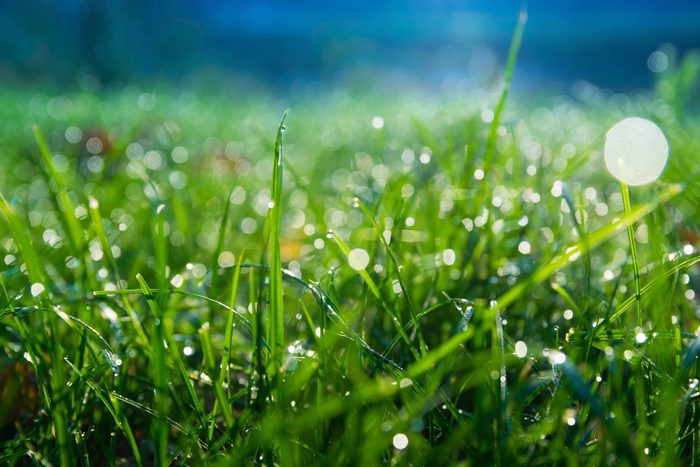
Give One Last Soak
Don’t fertilize or prune any shrubs or trees since this may promote new growth that will be killed by the frost, but do remove any dead or damaged branches. If it’s been a dry, hot summer and autumn, give trees and shrubs a good deep soak with a long, slow flow of water. When you’re finished, drain your hose and store it. Remember to turn off the outside water tap!